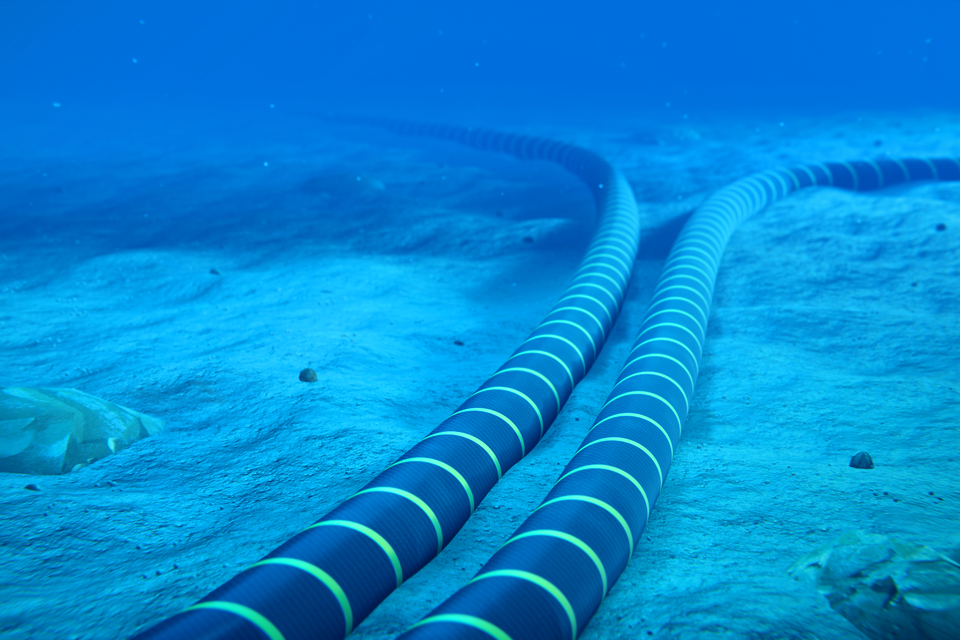Detecting earthquakes and monitoring seismic activities are challenging feats for scientists due to the number of seismometers needed both on land and under the ocean.
Setting up these instruments is more difficult under the sea. As over 70% of the planet’s surface is covered in water, it is hard to have detection equipment everywhere needed.
Since seismographs are highly sensitive, they are difficult to install and maintain with kilometers of water above. In recent years, there was a development in ocean-bottom seismometers, but covering the whole seabed is virtually impossible.
But, already existing equipment on the ocean floor could be a solution to detect earthquakes: undersea fiber-optic cables.
In addition to their role in telecommunication, they can serve a dual purpose as acoustic sensors.
Distributed Acoustic Sensors: Optic-Fiber Seismology
While most seismic stations are installed on land, most of the tectonic activity actually occurs in the oceans. Land instruments can detect quakes happening undersea but with a critical time delay.
“There is a huge need for seafloor seismology. Any instrumentation you get out into the ocean, even if it is only for the first 50 kilometers from shore, will be very useful,” said Nate Lindsey.
Lindsey, a UC Berkeley graduate student, is the lead author of a new paper describing a new technique to detect earthquakes using fiber-optic cables.
There’s a growing interest in this technique called Distributed Acoustic Sensing (DAS).
To turn a fiber-optic cable into a large acoustic sensor, here’s how DAS technology works: a photonic device on one end sends short laser pulses down the cord and measure the backscattering, or the echo, on the other end. As a seismic wave traverses the cable, it distorts the light that passes through it.
By comparing the original laser signal with the light coming out of the cable, the researchers determined how deformed the beam. From this information, the team was able to deduce the power of seismic shock.
Using this method, the team turned 20 kilometers of the undersea fiber-optic cable into the equivalent of ocean-bottom 10,000 seismic stations. After experimenting for four days in Monterey Bay (CA), they recorded a 3.5 magnitude earthquake.
Spanning the planet is a dense network of thousands of miles of fiber-optic cables waiting to be converted into a global seismological system. It is already put in place and doesn’t require much setting up. Lindsey added:
“The beauty of fiber-optic seismology is that you can use existing telecommunications cables without having to put out 10,000 seismometers. You just walk out to the site and connect the instrument to the end of the fiber.”
Fiber-optic-based acoustic sensors can also help map submarine fault zones and detect tsunamis.
The paper, Illuminating seafloor faults and ocean dynamics with dark fiber distributed acoustic sensing, is published in Science.



















Investment is one of the best ways to achieve financial freedom. For a beginner there are so many challenges you face. It’s hard to know how to get started. Trading on the Cryptocurrency market has really been a life changer for me. I almost gave up on crypto at some point not until saw a recommendation on Elon musk successfully success story and I got a proficient trader/broker Mr Bernie Doran , he gave me all the information required to succeed in trading. I made more profit than I could ever imagine. I’m not here to converse much but to share my testimony; I have made total returns of $10,500.00 from an investment of just $1000.00 within 1 week. Thanks to Mr Bernie I’m really grateful,I have been able to make a great returns trading with his signals and strategies .I urge anyone interested in INVESTMENT to take bold step in investing in the Cryptocurrency Market, he can also help you RECOVER your lost/stolen Cryptocurrencies. you can reach him on WhatsApp : + 1 (424) 285 – 0682 or his Gmail : BERNIEDORANSIGNALS @ GMAIL . COM bitcoin is taking over the world, tell him I referred you
I invested online of which I got stuck having challenges of making withdrawal of my investment profit ,I sent Gavin Ray all he needed to place a Recovery and I got a call by the bank confirming the payment in my account,quick satisfaction on every successful withdrawals with him, on gmail: gavinray78 @ gmail. com or WhatsApp 1 (352) 32 2‑2 0 96